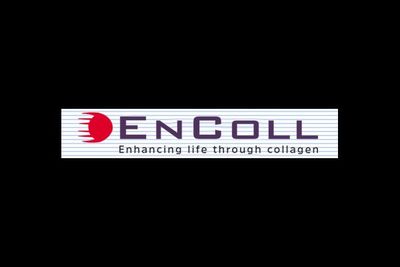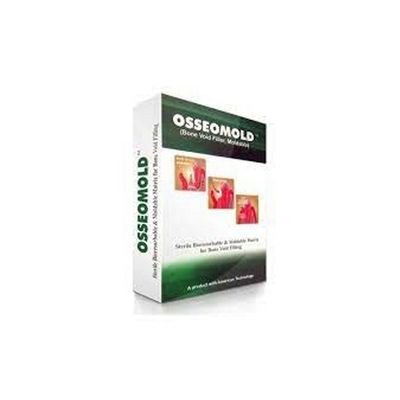

- Home
- Companies
- EnColl Corporation
- Products
- Encoll OsseoMold - Bone Void Filler

Encoll OsseoMold - Bone Void Filler
Over 100 years of research, experimentation and use has demonstrated that calcium sulphate enhances bone regeneration and is totally biocompatible and and resorbable. At the same token, high purity type-I collagen DMBM (xenograft) also is essential for tissue regeneration and remodeling. Osseomold consists of both materials admixed in proper proportions to give the best biological and mechanical features for bone regeneration.
SPACE MAINTAINER: BONE REGENERATION MATERIAL OSSEOMOLD R High purity Type-I collagen derived from bone is essential for tissue regeneration and remodeling in any osseous defect. Osseomold is a biocompatible demineralized bone derived Type-I collagen for bone space filling purposes. The presence of calcium sulphate hemihydrate helps to render the molding features for this product.
TOTALLY RESORBABLE:
It is possible to modulate the resorption time to the regenerative need, changing the solid-to-fluid ratio. Generally, the material is totally resorbed within 6-12 weeks.
OSTEOINDUCTIVE & OSTEOCONDUCTIVE:
Osseomold is Osteoinductive by DMBM and moldable by calcium sulphate hemihydrate. The American patented technology adds better biocompatibility and bioactivity to this Osseomold.
COST-EFFECTIVE:
Many bone defects are large, and extensive amounts of material are required. The high cost of other effective bone regenerative materials may discourage their utilization. OSSEOMOLD is relatively inexpensive even for large defects
CLINICAL DATA:
The human clinical results at 4 months show a good outcome in terms of complete bone regeneration and representation of the implemented OSSEOMOLD. The resulting product is proven effective over any pure inorganic compounds of calcium or other mineral only graft materials.
EASE OF USE:
It is often difficult to shape and place bone filling materials. Irregular defect shapes often lead to the dislodgement and exposure of the regenerative material.
OSSEOMOLD has a natural cohesiveness to form a sticky putty-like consistency and can be easily placed and molded to the defect shape.
STEP 1
Deposit the necessary quantity of the product in a sterile dish and add few drops of sterile saline solution or water. Mix until the material has a pasty consistency. If the mixture is too fluid, pat it with a sterile gauze to absorb excess liquid.
STEP 2
Small amounts of the mixture are introduced into the defect successively in portions. Each layer is then compressed with a sterile spatula or gauze pad until the defect is slightly overfilled.
STEP 3
Position the edges of the gingival tissue and suture. No primary closure of the flap is necessary, secondary intention healing will normally produce an excellent result.
